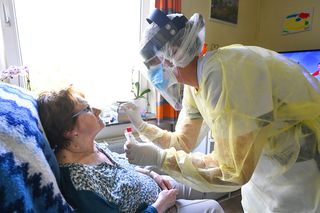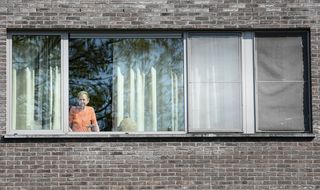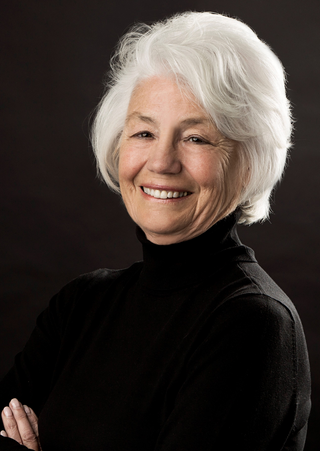In an earlier piece of analysis for the US Studies Centre, I outlined the excessive toll of the coronavirus infection on the elderly population. In this follow-up, I look specifically at the dire impact on nursing homes, how this might have been avoided, and what needs to be done in the future.
Background
In both the United States and Australia, the first major outbreaks of coronavirus infections were in aged care facilities. Despite the early warnings, today in both countries the residents and staff in these facilities continue to make up a major proportion of the infections and about one-third of all deaths from COVID-19.
The pandemic’s heavy toll on nursing homes is not surprising. The residents are sick, frail and elderly, with serious chronic conditions that make them especially susceptible to the potentially lethal effects of this new coronavirus. A significant percentage have dementia; almost all require assistance with the activities of daily life such as feeding, bathing and toileting; and they are typically living in close quarters with workers moving from room to room.
In the United States, data published on 11 May showed that the coronavirus had infected more than 153,000 people at some 7,700 nursing home and long-term care facilities and at least 28,100 residents and workers had died.
These inherent difficulties in the care of residents are compounded by recognised deficiencies in staffing and training, timely access to medical care, nutrition, medication regimes and hygiene practices. While these are not universal, they are far too common, often reflecting the drive for profits from providers.
The aged care workforce in Australia and the United States is reliant on care workers (usually women) who are poorly paid with few benefits, not always well trained, and often not fluent in English. Many are casual employees who work shifts in multiple facilities to make ends meet.
All these are contributing factor to why infectious disease spreads so easily in the aged care environment. But they were factors well known before the arrival of coronavirus, and the vulnerability of aged care facilities to this new virus was already on stark display in Europe: so why have aged care facilities failed so badly to control the spread of coronavirus?
The shocking toll in aged care facilities in the United States
The first recognised coronavirus outbreak in the United States was in an aged care facility in the Seattle area, where the first case was reported on 28 February and where, to date, 128 infections have been recorded with 45 deaths. The facility was completely unprepared for the tragedy that quickly unfolded as residents and workers fell ill and — sadly — there was no recognition of the national tragedy this would presage.
A database compiled by the New York Times shows that on 11 May the coronavirus had infected more than 153,000 people at some 7,700 nursing home and long-term care facilities and at least 28,100 residents and workers had died. These figures are likely an undercount as testing, autopsies and reporting are inconsistent and a significant number of states do not report these data.

Based on these figures, aged care facilities account for 11 per cent of all cases and 35 per cent of all deaths from the coronavirus in the United States. In fourteen states, aged care facilities account for more than half of all COVID-19 deaths and in some states, the figures are appallingly worse: 80 per cent of all deaths from COVID-19 in Minnesota and West Virginia, 73 per cent in Rhode Island, and 66 per cent in Pennsylvania have been aged care residents and workers.
Aged care facilities are hotspots for coronavirus infections in Australia
The Dorothy Henderson Lodge in suburban Sydney became Australia’s first COVID-19 cluster in late February. Three of the facility’s residents were among the first four people to die from COVID-19 in Australia and ultimately three more residents died before NSW Health declared the outbreak over on 8 May.
On 17 May Australia's Department of Health website reported 63 cases of COVID-19 and 26 deaths in aged care facilities, almost all of these in NSW.
Since then, about 25 of Australia’s 2,700 aged care facilities have recorded cases. While most of these are described by federal Aged Care Minister Richard Colbeck as minor, one outbreak at Newmarch House in western Sydney was described as spreading “like a bushfire”.
On 17 May the federal Department of Health website reported 63 cases of COVID-19 and 26 deaths in aged care facilities, almost all of these in NSW. There have been just two deaths elsewhere (one each in Queensland and Tasmania) and no infections or deaths reported in the Northern Territory, South Australia, Victoria or Western Australia. These figures are unchanged over the past week, signally that hopefully Australia has been successful at containing these aged care hotspots.
Why are aged care facilities so vulnerable to coronavirus?
In both the United States and Australia, there are long histories of aged care facilities failing to meet the set standards for quality and safety.
In the United States, a review of federal inspection records by Kaiser Health News in March 2020 found that more than 60 per cent of nursing homes had incurred at least one citation for failures in infection control since 2017. The Centers for Disease Control and Prevention (CDC) estimates that each year, there are up to three million serious infections in the five million or more people who are in long-term care facilities (nursing homes and assisted living facilities) and these infections, many of which are preventable, are responsible for 380,000 deaths.
The hygiene failures are primarily attributed to a lack of staff and resources. Citations for poor hand-washing are more common in facilities with fewer staff, presumably because burdened care workers are rushed in handling their high-needs patients. For-profit ownership and private equity takeovers have been specifically linked to reduced quality of care, reduced staffing levels and expertise, and weakened compliance with federal standards.
In both countries, the responses to coronavirus outbreaks in aged care have been hampered by lack of testing, dire shortages of personal protection equipment, and pre-existing staff shortages that are now aggravated by staff needing to self-isolate.
The Trump Administration has actively worked to roll back existing protections, including an Obama-era regulation that required all nursing homes to put infection control experts on staff. Penalties for infractions have also been substantially reduced.
In Australia, the Royal Commission on Aged Care Quality and Safety has been shining a light on these kinds of deficiencies and more. There have been dismaying stories of abuse, malnutrition and neglect. Yet, despite a litany of scandals, a 2017 independent audit found that regulatory oversight was lax and so focused on paperwork and process over patient outcomes that it rarely found a failure of care during an accreditation audit.
In both countries, the responses to coronavirus outbreaks in aged care have been hampered by lack of testing, dire shortages of personal protection equipment, and pre-existing staff shortages that are now aggravated by staff needing to self-isolate. Part of the problem has been that staff who have not known they are infectious have continued to work, in some cases at multiple facilities. For many of these workers who are often immigrant women, taking time off work to self-isolate would mean no family income. Additionally, it’s likely that recognising COVID-19 symptoms in elderly patients who are already sick has been difficult.
What has been done to help aged care facilities?
As outlined above, the three immediate problems for aged care facilities are:
- Not enough testing;
- Not enough protective gear; and
- Not enough workers.
These can be fixed quickly to considerably reduce the coronavirus toll if the political will is there.
In the United States, the federal response has been slow, leaving states to respond. A 27 March CDC report on the Seattle outbreak made recommendations for infection control in aged care, describing the measures as “critical”, but the Trump Administration provided no resources for these.
A month later, on 30 April, the Trump administration announced it was shipping protective gear to more than 15,400 nursing homes around the country but this is a stop-gap measure. Each nursing home will receive two shipments over the next two months, each with just seven days' worth of equipment.
A 27 March CDC report on the Seattle outbreak made recommendations for infection control in aged care, describing the measures as “critical”, but the Trump Administration provided no resources for these.
On 11 May, the Trump Administration recommended testing at all aged care facilities (at least one million residents and an unknown number of staff) and President Trump said he would consider mandating this — at the same time blaming governors for their “lax” responses. However, access to testing continues to be a vexed issue.
There is new and updated CDC guidance on infection prevention and control and new regulatory requirements for aged care facilities to provide information to residents and families and to report cases of COVID-19 to the CDC (however no such aged care data appears on the CDC website and the New York Times says there is no national database).
In Australia, all staff at Newmarch House aged care facility are currently subject to daily testing after a review by NSW Health showed possible breaches of infection control protocols, but the government has no plans to extend daily coronavirus testing to other aged care facilities. Testing is only required if “there are two or more people with fever and respiratory symptoms in the setting”.
General practitioners who visit aged care facilities in Australia have spoken out about their concerns that protective equipment (PPE) — needed by cleaners and food workers as much as nurses and aides — is in short supply. Aged care facilities can make direct requests for PPE to the Australian Government’s emergency stockpile, but this is increasingly deficient and they only get this help if there are already confirmed infections. Again, a case of too little, too late to ensure proper protections for residents, workers and visitors.
To date, the Australian Government has provided some A$550 million in support packages to the aged care sector, but it says this amounts to only an extra A$2 per resident per day and that it will need between A$1.3 billion and A$1.5 billion over the next six months to fund increased staff and safe visitations.
Australian federal government guidelines have been issued for facilities, workers and residents and their families. In particular, Australia has recognised the impact that restricted visits have on the residents of aged care facilities and the difficulties in balancing their social isolation against the risk of infection. There is strong public support for the current precautionary approach, with exceptions for compassionate reasons.
What else can be done?
While Australia might cautiously anticipate that the coronavirus pandemic is under control in both aged care facilities and the nation as a whole, the United States is a long way from that situation. Already there are reports of multiple bodies abandoned in US nursing home morgues, which are sickeningly similar to those from Spain.
For now, the primary focus must continue to be on providing the essentials (testing, protective equipment and workforce). The ability to isolate infected patients is also critical. There is precedence in the United States for sending in uniformed services personnel to assist in short-staffed, overwhelmed facilities; this has been done in a number of states including New Jersey, California, and Tennessee.
The primary focus must continue to be on providing the essentials — testing, protective equipment and workforce. The ability to isolate infected patients is also critical.
Specialist doctors who have been treating COVID-19 patients have called for mandated use of pulse oximetry monitoring of aged care residents at least daily and twice a day in facilities with known coronavirus infections. The rationale is that this simple and affordable technology would identify patients with COVID-19 pneumonia earlier, so they could be treated with less intensive respiratory therapy instead of a ventilator which is often of little benefit for older patients.
Efforts must be made to protect aged care residents who do not have coronavirus but who are not receiving the care and attention they need because the focus is on those with COVID-19. There is evidence from the United Kingdom that the subsequent indirect death toll from COVID-19 could equal the direct toll.
It is important to find a balance between the needs of residents to be protected from infection and to see their families. It is also important to recognise the levels of fear and anxiety of staff who are afraid they will bring the virus to work and bring it home to their families; these uncertainties contribute to burnout and go some way to explaining those incidents where patients have been abandoned.

Meanwhile, there is concern in the United States from providers, infection control experts and advocacy groups that draft guidelines for reopening aged care facilities, developed by federal health regulators, move too fast and could increase the risks for residents.
Beyond the emergency response – the future of aged care
Beyond the current crisis, the key issue for aged care services into the future will be, as always, the extent of government funding and oversight. Residents and their families want more staff, protections and transparency to improve the quality of care.
In the United States, where almost 70 per cent of the nation's more than 15,000 nursing homes are run by for-profit companies, the lobbying pressures have already begun. Aged care facilities, worried about a potential flood of lawsuits, have begun a sweeping lobbying effort to get states to grant them emergency protection from claims of inadequate care. They argue this was an unprecedented and unexpected crisis and they should not be liable for events beyond their control such as shortages of protective equipment, testing, and decimated staffs.
At least fifteen US states have enacted laws or have governors' orders that explicitly or apparently provide aged care facilities with some protection from lawsuits arising from the crisis. Seniors’ advocacy groups view this as a patent effort by aged care providers to protect their bottom line. They have called for creating a “medical-loss ratio” for providers; a minimum standard for how much revenue must go to patients, rather than administration or profits, with penalties for violations. A similar standard exists for insurance companies as part of the Affordable Care Act.
The crucial decisions that come next will determine not just how aged care residents and services fare in the pandemic, but the trajectory for future needed reforms.
It's hard to see the Trump Administration undertaking major reforms in aged care services, so any possible changes hinge on the outcome of the November 2020 elections. November also marks when the final report of the Royal Commission is due in Australia. The interim report pulled no punches; it found the aged care system “cruel and discriminatory” and a “sad and shocking system that diminishes Australia as a nation”. Assuming the final report takes the same blunt approach, and given public sentiment on this issue, it will be hard for the government to ignore its recommendations.
Improving the aged care workforce, in terms of both numbers and training, is the fundamental issue for both countries and that certainly means improved wages and conditions. The coronavirus crisis has highlighted the value of aged care workers and the conditions of their workplaces, but their push for wages rises will come as economies are struggling and unemployment is high.
Given the Australian federal government contributes almost 80 per cent of total aged care expenditure ($20.1 billion in 2018-19), seminal questions for Australia include whether the level of oversight is proportionate and whether it is appropriate to have aged care services for the most vulnerable Australians operated for for-profit entities. It is noteworthy that the 2015 Harper Competition Policy Review cautioned that more private-sector competition may not be the answer to aged care reform and that it is the responsibility of government to ensure “minimum standards of quality and access in human services.”
Coronavirus is serving to highlight the already-known problems in aged care. Fixing them will require considerably more leadership, action, resources and long-term commitment than has been demonstrated to date in addressing the essential, urgent and obvious short-term needs. Will the coronavirus pandemic serve as the needed wake-up call for the way aged care is operated, funded and regulated? And can the demand for increased resources be met at a time when government budgets are in deep deficit? The crucial decisions that come next will determine not just how aged care residents and services fare in the pandemic, but the trajectory for future needed reforms.






